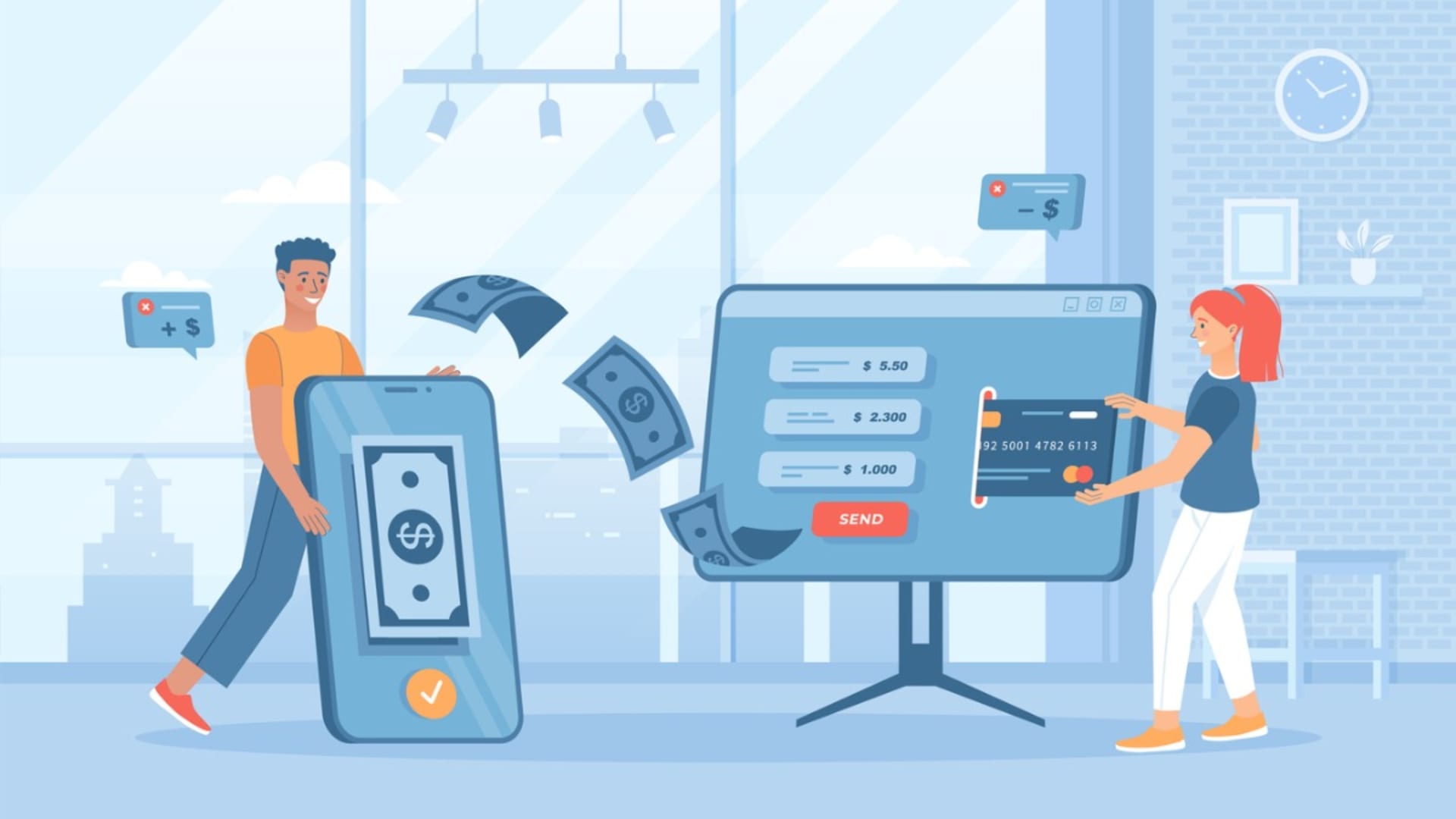Application integration services enable the seamless flow of data between otherwise disconnected software systems within an organization. The main goal is to get disparate applications to communicate and work together efficiently, acting as an integration solution.
Importance of Application Integration in Your Business Processes
There was a time when on-premise software was the dominant technology within organizations. Applications and systems ran independently of one another, completing tasks and responsibilities separately and in isolation. These were primarily on premises applications. There was no enable communication among the tools in your stacks.
Today, however, we are in a new digital business age. This era is characterized by cloud computing, overhauling legacy applications — often outdated technologies that have been in place for too long at an organization — and programs that function in collaboration with one another. This means that application integration services, or more commonly known as integration platform services, are necessary.
Whether you rely exclusively on the cloud or use a combination of on-premises technologies and cloud-based ones, you need to ensure everything works together cohesively and efficiently. You are focusing on myriad tools to optimize your business process, and they’re probably not all from the same vendor. So, in order to eliminate data silos, connect applications, and enable inter-system communication and interoperability, you need to integrate your tools effectively.
Key Components of Integration Services
There are a few key technical components that makeup application integration architectures, that can be viewed as a sort of enterprise service bus:
Middleware
Middleware acts as the enterprise integration tool between software applications. It shuttles application data back and forth, translating it into the necessary formats. Types of middleware include message-oriented middleware, transactional middleware, and API middleware.
ETL (Extract, Transform, Load)
ETL pulls data out of one or more sources (extract), modifies it to fit the target structure (transform), and inserts it into a destination system (load). This data integration, sometimes utilizing web services and data services, is vital for analytics, reporting, and more.
APIs (Application Programming Interfaces)
APIs provide a consistent way for applications to communicate with each other programmatically. Integrating via APIs allows structured app integration without human intervention.
Benefits of Outsourcing Application Integration
Some existing services, such as AWS application integration services, enable this process. While businesses can rely on the out-of-box features of these tools, an outsourcing partner can employ an even more thorough approach, leveraging existing technologies to automate business processes or developing a customized methodology.
When you outsource application integration, you will take advantage of:
- Deep expertise in connected systems and specializations
- A tailored approach based on business rules
- Process automation for business-critical applications
- A competitive advantage in a fast-moving technology-driven market
- Event-driven architectures leading to a higher ROI
- Greater visibility over your new business models
- Scalability and growth opportunities
- Reporting and access to data about your procedures and tools
- A greater ability to respond to customer demands
- Increased productivity and efficiency
- Better user experience
Challenges in Application Integration
There are also a few common challenges to address:
Diverse Software Architectures
Disparate applications can have very different technological architectures. Middleware must elegantly bridge the gaps.
Security Concerns
Opening up data flows raises potential cybersecurity risks like data leaks. Robust measures are required to enable secure integration.
Scalability Issues
As organizations grow, their integration needs change. Solutions must scale to handle more applications and higher data volumes over time.
Choosing an Integration Tool
Key selection criteria include scalability, security, and cost. The best solution provides a balance of robust integration capabilities with affordability and flexibility. With the right platform, integrating disparate systems doesn’t have to be painful.
To meet the demands of businesses, various platforms have emerged, offering tailored solutions for application integration. Here, we’ll delve deep into three leading platforms: MuleSoft, Zapier, and Apache Camel.
#1 MuleSoft
MuleSoft stands tall as an industry giant in the realm of application integration. With its advanced Anypoint Platform, businesses of all sizes can ensure robust connectivity between their myriad applications.
Key Features
- Comprehensive Connectivity: MuleSoft offers vast integration solutions that cater to various business needs, ensuring that different applications communicate efficiently.
- Cloud and On-Premises Integration: With MuleSoft, businesses aren’t restricted to one deployment option. It provides flexibility, allowing for both cloud-based and on-premises integrations.
- Security: Known for its robust security measures, MuleSoft ensures that all data transferred between integrated systems remains protected against potential threats.
- API Lifecycle Management: Beyond just application integration, MuleSoft offers tools to design, build, and manage APIs, making it a comprehensive solution for businesses.
#2 Zapier
Zapier simplifies the concept of integration, making it more accessible even for those with minimal technical know-how. With its user-friendly interface and vast array of pre-built connections, it’s no wonder many small to medium-sized businesses gravitate towards this platform.
Key Features
- Pre-built Connections: With thousands of ready-to-use integrations, users can swiftly connect their apps without diving deep into the technicalities.
- Intuitive UI: Designed with the non-technical user in mind, Zapier’s interface is straightforward, allowing users to set up workflows with ease.
- Automated Workflows: Known as “Zaps”, these workflows automate repetitive tasks between applications, saving users time and reducing the chance of errors.
- Expandability: Though it offers pre-built connections, Zapier isn’t restrictive. Advanced users can customize and expand on these connections to suit specific needs.
#3 Apache Camel
A powerful open-source tool, Apache Camel offers a range of connectors and is backed by a vibrant community that continuously contributes to its growth and development.
Key Features
- Extensive Connectors: Apache Camel stands out with its rich set of connectors, allowing businesses to integrate almost any application.
- Flexibility: Being open-source, Apache Camel provides users with the freedom to tailor the platform to their unique requirements.
- Active Community: An undeniable strength of Apache Camel is its community. This ensures regular updates, a vast resource pool, and timely support for its users.
- Lightweight: Apache Camel is designed to be lightweight, ensuring that integrations are fast, efficient, and don’t bog down systems.
In conclusion, while each of these platforms offers unique strengths, the choice boils down to the specific requirements of a business. Whether you’re seeking a comprehensive solution like MuleSoft, a user-friendly platform like Zapier, or the flexibility of Apache Camel, the integration world has something for everyone.
How to Choose the Right Application Integration Company
How, then, do you select the best application integration company for your business? Start by taking stock of your needs. What kind of company are you? For example, if you’re a large operation with numerous applications in your stacks, you should consider an outsourcing partner that specializes in enterprise application integration services.
Also, think about the applications themselves. What kind of programs do you have? How do you want them to function together? Once again, look for a partner who has expertise in working with these platforms.
Of course, there are other factors to consider, including the types of projects the prospective partner has worked with in the past, reviews from previous clients, cybersecurity measures, cost, and experience in your sector.
How to Choose the Right Application Integration Service
Choosing the right integration service begins with understanding your requirements. Recognize your company’s size and needs. For larger organizations, it might be beneficial to opt for a service specializing in enterprise application integration.
Furthermore, consider the type of applications in use and how you’d like them to function in unison. Prospective partners should have a track record with these platforms. Other factors to weigh include past projects, client reviews, cybersecurity measures, cost, and relevant experience.
Types of Applications Integrated
Organizations today deploy a variety of applications:
- Artificial intelligence (AI) apps
- Cloud applications
- Content management systems (CMS)
- Customer relationship management (CRM) software
- E-commerce tools
- Enterprise resource planning (ERP) platforms
- Industry-specific tools and platforms
- Internet of Things (IoT) apps
- Legacy applications
- Mobile, desktop, and web apps
- Open-source applications
- Shipping and logistics tools
- Software as a service (SaaS) applications
- Supply chain management (SCM) tools
- Workflow automation platforms
Integration Methodologies
The best methodologies for software development, management, and integration often hinge on an Agile approach. By gathering business requirements and devising a tailored plan, workflows can be optimized. Pain points are identified and addressed. An automation-centric approach ensures efficiency, but manual methodologies are employed when necessary, reducing manual effort.
Quality assurance is another crucial aspect of integration services. Testing procedures, both automated and manual, are implemented to ensure minimal errors and defects.
Conclusion
As businesses evolve, seamless communication between diverse software systems becomes critical. Leveraging robust business applications and methodologies helps streamline processes, improve inter-system connectivity, and gain a competitive edge.
Whether through cloud integration, on-premises applications, or a hybrid approach, having the right integration strategy in place is pivotal for any modern applications seeking sustained success and adaptability. Smooth data required flows and workflows are no longer nice-to-haves but fundamental for organizations looking to optimize operations, boost agility, and deliver exceptional customer experiences in an increasingly technology-driven world.







